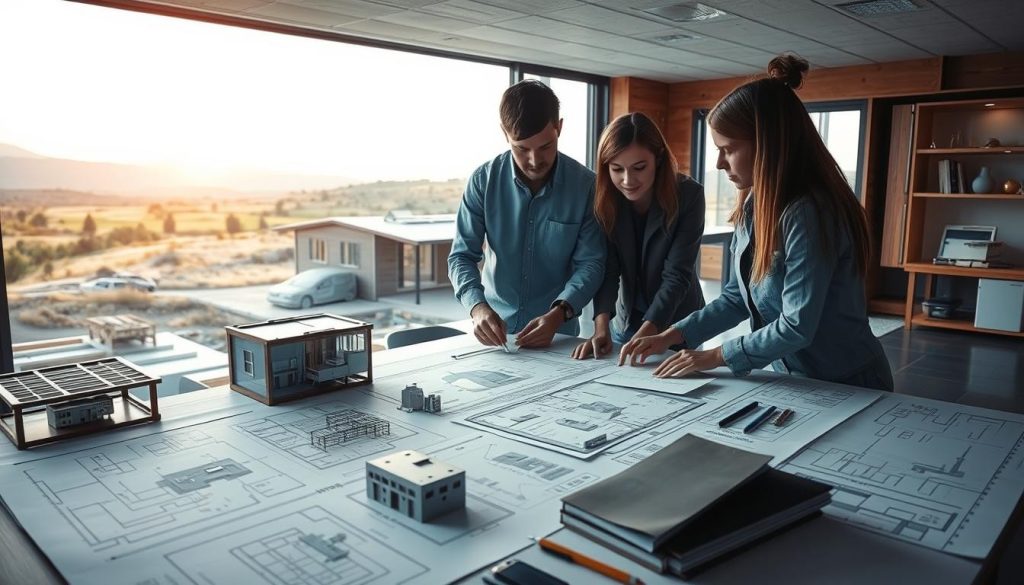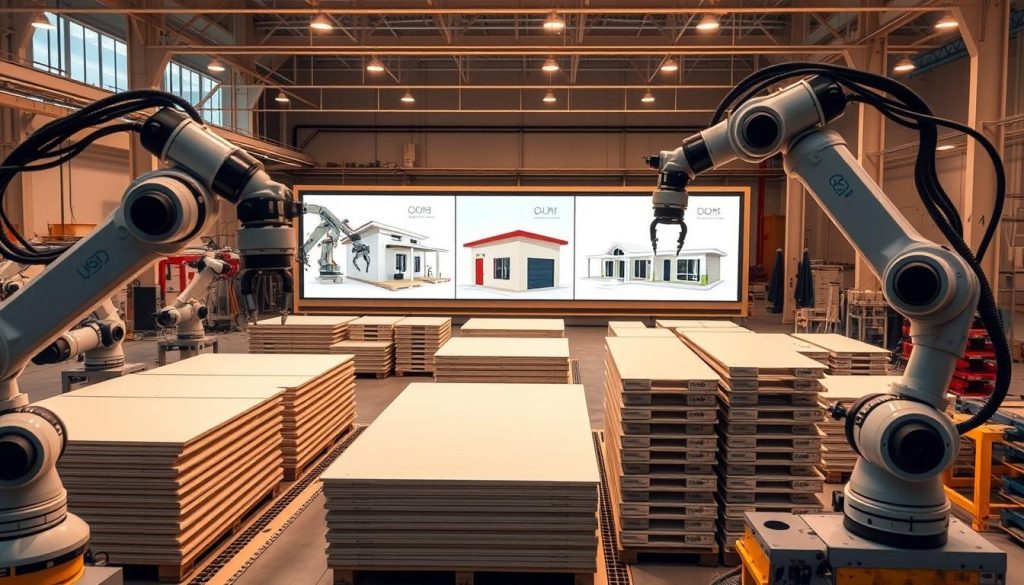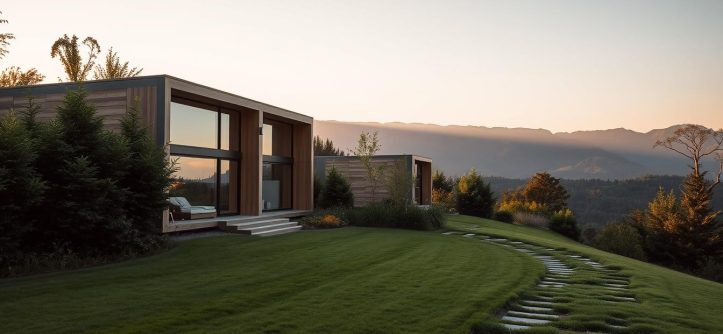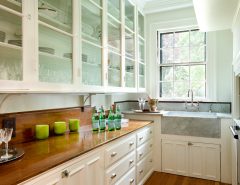On a crisp Melbourne morning, Emma Rawlinson watched her dream home take shape. It was a remarkable sight. Her journey with modular home designers started with a clear goal.
She wanted a sustainable, efficient living space that was different from traditional homes. Prefab house architects in Australia are changing residential design. They turn architectural dreams into real, beautiful homes.
These architects focus on creating homes that fit individual lifestyles and meet environmental challenges. The magic of modular home designers is their mix of technology and creativity. They turn complex ideas into high-quality, transportable homes.
Key Takeaways
- They offer innovative residential solutions
- Prefab architecture provides faster construction timelines
- Customisation remains a core strength of modern modular design
- Sustainability is central to contemporary prefab approaches
- Technology drives precision in modular home construction
Understanding the Evolution of Modern Modular Home Design
Australia’s housing scene has changed a lot with modular building solutions. Architects and designers have made big changes. They’ve come up with new ways to build homes that meet today’s living needs.
The Rise of Prefabricated Architecture
Prefabricated homes are becoming more popular in Australia. They offer a new way to build homes that are good for the environment and easy to change.
- Rapid construction timelines
- Reduced environmental impact
- Cost-effective housing alternatives
- Flexible design capabilities
Benefits of Contemporary Modular Construction
Modular homes in Australia have many benefits. They are built quickly and with less waste. This means homes that are strong and of high quality.
Current Market Trends and Consumer Preferences
Australians are choosing modular homes more and more. They want homes that are good for the planet and can change with their needs.
The future of housing lies in intelligent, sustainable design that responds to both individual needs and broader environmental challenges.
There’s a big push for new housing ideas in Australia. This is making the country a leader in building design.
The Initial Consultation Process with Modular Home Designers
Starting your journey to create custom transportable homes begins with a key first step. This is the initial consultation with the designers. This meeting is the start of turning your dream home into something real.
In the first meeting, you’ll have a detailed and team effort discussion. It’s more than just about the design. Designers use this time to really get what they want and need.
“A successful design starts with listening – truly understanding the client’s lifestyle, aspirations, and functional needs,” says Emma Richardson, a leading Australian modular home design expert.
- Discuss personal design preferences and aesthetic goals
- Review budget constraints and financial expectations
- Evaluate possible site specifications and environmental factors
- Look at new design solutions for custom transportable homes
This meeting dives into important details. They will look closely at what you need. They help you through the complex process of making a home that’s just right for you.
Professional designers see each custom transportable home as a special way to show off your lifestyle and dreams. They use their skills, creativity, and teamwork to make your dream home come true.
Creating Custom Transportable Homes: Design and Planning Phase

Designing custom transportable homes is a detailed process. It mixes creativity, practicality, and green living. Kit home experts tackle the special needs of building modular homes. They aim to meet client wishes and protect the environment.
The start of making green modular homes is a detailed design plan. It looks at many important things.
Site Analysis and Environmental Considerations
Good custom transportable homes begin with a careful site check. Designers look at key environmental factors. These affect where and how the home is built:
- Terrain topography
- Solar orientation
- Wind patterns
- Local climate conditions
- Soil composition
Material Selection and Sustainability Features
Kit home experts choose eco-friendly materials. They want to lessen harm to the environment and make homes last:
| Material Category | Sustainability Rating | Performance Characteristics |
| Recycled Steel | High | Strong, low carbon footprint |
| Bamboo Composites | Very High | Renewable, light, versatile |
| Reclaimed Timber | High | Natural look, less deforestation |
Space Optimisation and Floor Plan Development
Creating smart floor plans is key to custom transportable homes. Designers use new ways to use space well:
- Multi-functional room designs
- Modular furniture integration
- Vertical space use
- Flexible partition systems
The main goal is to make living spaces that change with your life. They should look good and be strong.
Innovative Technologies in Prefab House Architecture

Prefab house architects are changing the Australian building scene with new tech. They’ve moved from simple designs to complex systems using the latest digital tools.
Today’s prefab architects use digital tools to make design and building easier:
- 3D modelling software for precise architectural visualisation
- Virtual reality design platforms
- Advanced computational design algorithms
- Automated manufacturing technologies
These digital tools help architects design detailed, custom homes. Computational design algorithms make sure every space is used well, adding value to each square metre.
With automated manufacturing, prefab homes are built faster and more accurately. Robots can make parts with incredible precision, cutting down on waste and making buildings stronger.
The future of Australian housing lies in the seamless integration of digital design and advanced manufacturing technologies.
New tech, like AI and machine learnin,g is also changing home design. They create homes that can change to meet our needs, making living spaces smarter and more flexible.
Sustainable Solutions in Luxury Prefabricated Designs
The world of luxury prefabricated designs is changing fast. It now combines top-notch looks with the latest in green tech. Modern sustainable modular homes are a smart way to live green, where beauty and the planet go hand in hand.
Eco-friendly modular construction is changing homes. It brings new ideas that cut down on harm to the environment. At the same time, it keeps homes comfy and stylish.
Energy-Efficient Building Materials
Designers are focusing on materials that are both good for the planet and look great. Some key ones are:
- Recycled timber and sustainable wood products
- High-performance thermal insulation
- Low-emission glass technologies
- Renewable composite materials
Smart Home Integration Options
| Technology | Energy Savings | Comfort Level |
| Automated Climate Control | 30-40% | High |
| Solar Power Management | 50-60% | Very High |
| Smart Lighting Systems | 25-35% | Moderate |
Environmental Impact Assessment
Luxury prefabricated designs get a close look at their environmental impact. These checks make sure each home:
- Reduces carbon footprint
- Minimises waste during construction
- Uses renewable energy
- Keeps high architectural standards
The future of sustainable modular housing is about combining tech with caring for the planet.
Quality Control and Manufacturing Standards
Kit home specialists in Australia know how important quality control is. The making of prefab houses has many checks to make sure they are top-notch. This ensures customers are happy with their homes.
Modular buildings are checked many times during production. These checks make sure the buildings are strong and well-made.
- Initial material inspection for durability and performance
- Structural integrity testing using advanced technological methods
- Precision measurement of architectural components
- Finish quality assessment with strict performance criteria
Prefab house architects work with certified engineers. Each modular home goes through many checks before it’s approved.
Australia has strict rules for making kit homes. These rules help ensure:
- Quality homes every time
- Safety that meets national standards
- Buildings that are good for the environment
- Structures that can handle different weather conditions
Top modular building solutions in Australia use the latest tech and strict quality checks. This means customers get reliable, high-quality prefabricated homes.
Conclusion
Designers bring new ideas to sustainable housing. This shift is towards homes that are better for the planet and meet today’s needs.
Going from idea to finished home shows the talent of these designers. They turn dreams into real homes. These homes are custom, save energy, and are kinder to the environment.
As tech gets better, these designers are making homes smarter. They create places that are more than just houses. They focus on quality, new ideas, and being green.
This means homes that look great and are good for the earth. It’s a big change for those who care about both looks and the planet.
FAQ
What exactly is a modular home?
A modular home is built in a factory in sections. Then, it’s moved to a site and put together on a foundation. They meet the same building codes as regular homes, making them a solid choice for living.
How long does it take to design and construct a modular home?
It takes 3 to 6 months to make a modular home. The design phase is 4-8 weeks. The actual building in the factory takes 6-10 weeks.
Putting it together on-site is quick, taking just a few days to weeks. This depends on how complex the design is.
Are modular homes more expensive than traditional builds?
Modular homes are often cheaper than building from scratch. They cost 10-20% less because of efficient factory work. This also means less waste and a more precise budget.
Can I customise a modular home design?
Yes! You can make your modular home unique. Work with architects to choose designs, finishes, and materials. You can go for modern or traditional styles.
How sustainable are modular homes?
Modular homes are very green. They use materials carefully, cutting waste by up to 75%. They also use eco-friendly materials and can be solar-ready, saving energy.
What about the quality and durability of modular homes?
Modular homes are built to last. They use top-notch materials and go through strict checks in factories. This means they’re stronger and have fewer problems than homes built on-site.
Do modular homes appreciate in value like traditional homes?
Yes, modular homes can increase in value like regular homes. This depends on where they’re built, how well they’re made, and how well they’re looked after. They can look and feel just like traditional homes.
How are modular homes transported and assembled?
The sections of a modular home are moved on special trucks. They’re then lifted into place with cranes. Skilled teams connect the parts and finish the utilities quickly.
Can modular homes be built in challenging Australian environments?
Yes! Modular homes can be made for tough Australian conditions. They can handle coastal areas, bushfires, and the outback. They’re designed to fit the environment.
What warranties are typically offered with modular homes?
Good modular home makers offer strong warranties. These include 10-25-year structural warranties and guarantees for parts and workmanship. Always check the warranty details with your designer.




